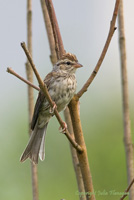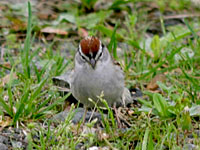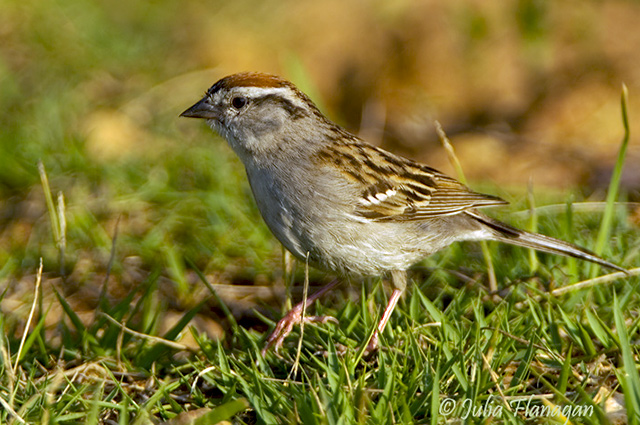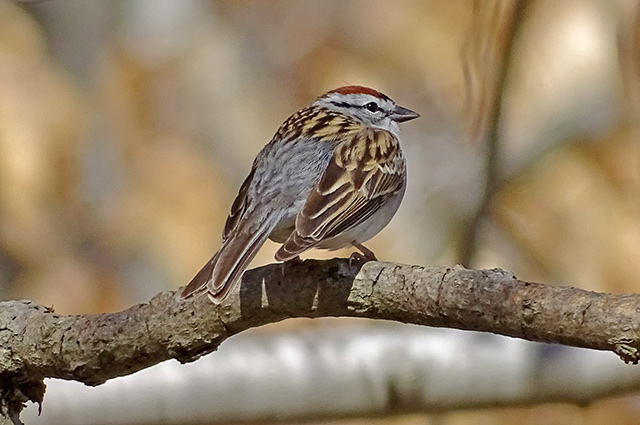|
|
 |
 |
Photos © Julia Flanagan, Meadowlark Gardens, Vienna, Virginia Photos below © Gary Myers Text by Ellen Katinas |
|
||
Chipping Sparrow It’s hard not to think of Chipping Sparrows as the “almost-artists” of the sparrow world. The male’s loud, trilling song, one of the most common sounds of a North American spring, consists of nearly identical “chip notes,” rapid and evenly spaced, lacking the trills and variations other birds give their tunes. And, as the male expresses himself with a song that isn’t musical, the female Chipping Sparrow designs homes that aren’t home-like. She has been known to put her pretty, cup-like nests in hanging baskets, or position them among antique gardening tools. (Can’t you just see the calendar photos?) A temperamental artist, she may abandon one nest mid-project to start over in another location. But like her mate’s song, the end result is a little “off.” The nests are so flimsy you can see through them, and ornithologists believe they provide scant warmth for the young birds. So Chipping Sparrows have their shortcomings, but shyness isn’t one of them. They thrive in populated areas and in some places their numbers have increased where humans settled. They live in forests, roadsides, parks, and suburbs. You can entice them to visit by putting black oil sunflower seeds into a feeder or scattering seed mix on the ground. If shrubs and small trees grow in your yard, the female may build a nest (the male guards her during construction but doesn’t chip in. Pun intended.) Chipping Sparrows are groundfeeders who occasionally enjoy cherries in addition to seeds of grasses and herbs. In breeding season, they add protein-rich insects to their diet. |







